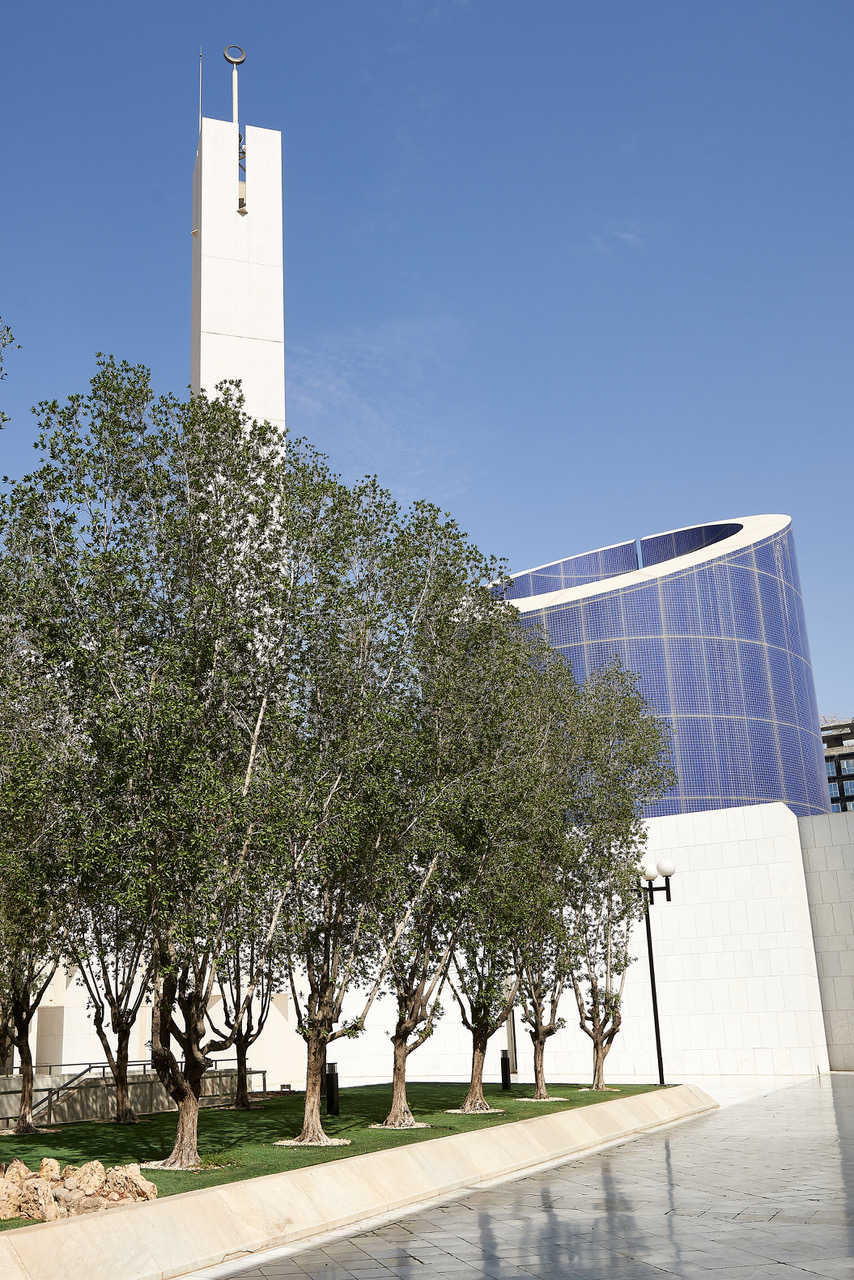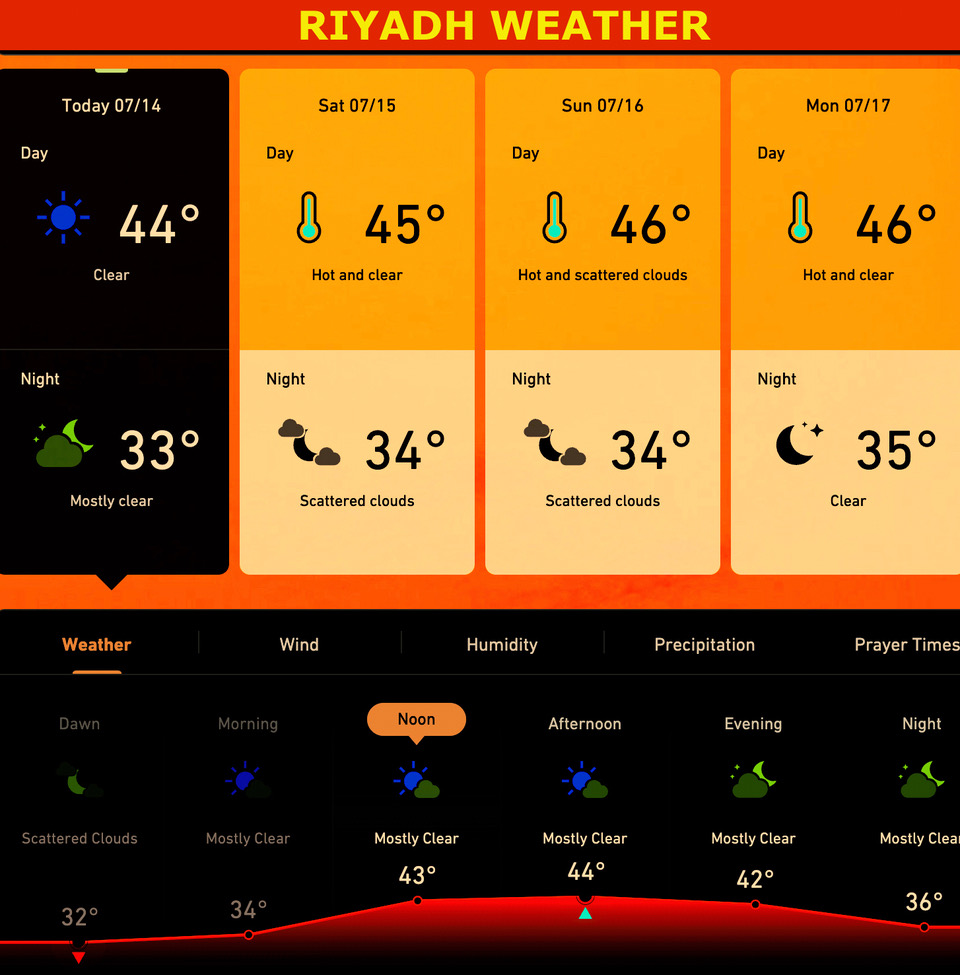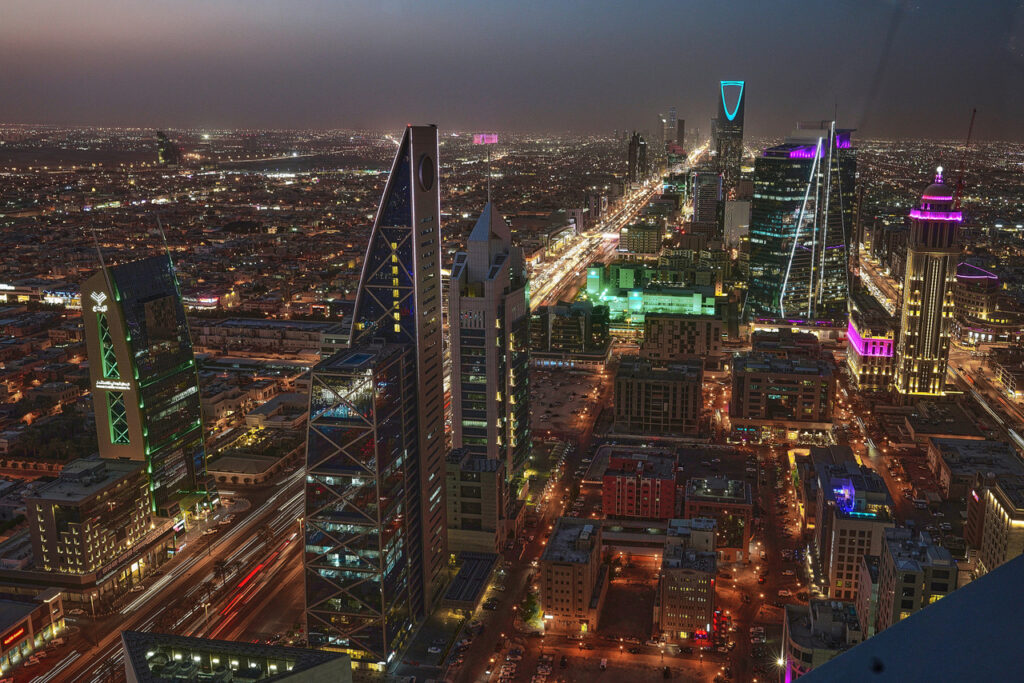Riyadh and its Mosques
It is said that Riyadh’s population, like that of the country as a whole, tends to think and live conservatively. This multifaceted assessment may be open to question. In any case, the Islamic religion plays an extremely important role in the daily life of the population. And that this is the case is clearly demonstrated to the visitor who steps onto the ground of the country at the airport for the first time, when his gaze inevitably falls on the mighty Airport Mosque, which can be seen in the above photo, as he leaves the airport building. The mosque is located in the center of the passenger terminal and can accommodate 5,000 worshippers inside and another 5,000 in the outdoor plaza. The dome, visible from afar, has a diameter of 33 meters.
I haven’t counted them … , but there are said to be over 4,000 mosques in the city. Unfortunately, most of the mosques are de facto not open to non-Muslims, although there are exceptions throughout the country – without any rule being apparent insofar. In any case, you should take into account the five prayer times per day. The local prayer times can easily be found on the Internet. In these times visits are excluded. Anyhow, in that bustling city you just might want to relax and to listen to the Muezzin’s daily Adhan (Call to Prayer). The word Muslim means “to submit” (to the will of God), and Islam comes from the Arabic word for peace, “salam”. Islam refers not only to a religion, but also to a whole way of life.
Most citizens are Sunni Muslims, only a small minority of the citizens of Riyadh are Shiite Muslims.
From the multitude of mosques, only three (purely subjective) will be selected and briefly presented:
Great Mosque Al Rajhi
This mosque should definitely be visited. The mosque, built with a donation from the Al Rajhi family, is – so it can be read – the largest mosque in the city and is considered one of the most important Islamic architectural highlights of modern times.
Address: Al Akheyar district, Al Jazirah, Riyadh 14251, Eastern Ring Rd, Salah Ad Din Al Ayyubi Br Rd intersection.
Imam Turki bin Abdullah Grand Mosque
This mosque is mentioned because it is included in a secular ensemble of monuments to be visited anyhow in Al Deerah District.
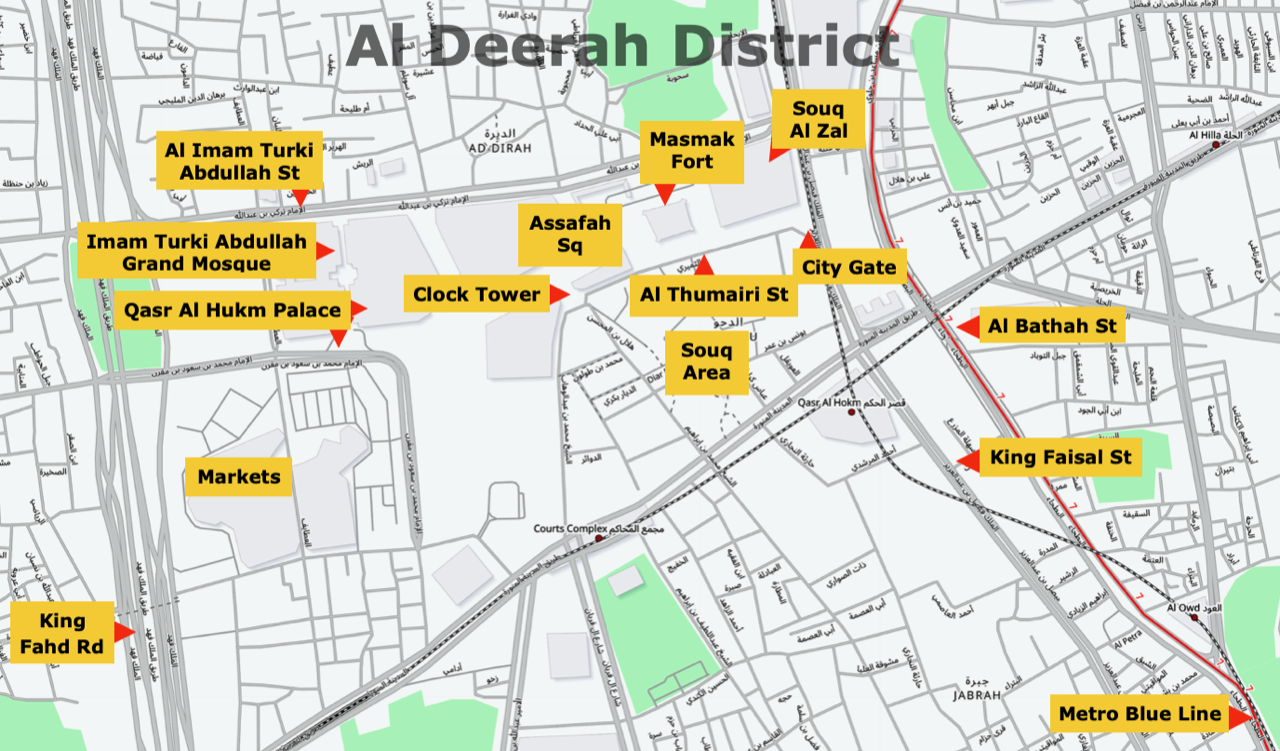
It is named after Turki bin Abdullah bin Muhammad. For a long time it played a key role as the Great Mosque of Riyadh. The mosque was rebuilt on its original site on an area of about 16,800 square meters to accommodate about 17,000 worshippers and reopened in January 1993. It comprises a number of buildings constructed behind high walls. The exterior and upper part of the interior of the mosque is mainly made of brown Arriyadh limestone, which appears golden when illuminated at night. Two minarets about 50 meters high on the north and south sides of the mosque have an almost square base, thus echoing traditional forms of regional architecture. The minarets do not have a spire that deviates from the shaft shape, which typically has a spherical or hemispherical shape or similar, but the shaft of the minarets simply ends with four corner pinnacles. In addition, the shape of the minaret shaft is punctuated by small angular openings that are stylistically echoed throughout the exterior wall of the mosque complex. This gives the entire mosque an atypical appearance that evokes associations with traditional fortifications.
The mosque is directly connected to Qasr Al Hukm Palace from the second floor via two bridges over Assafah Square, and is therefore located in the Qasr Al Hukm neighbourhood, the old center of Riyadh, near the Governorate Complex and the Municipality and Police Headquarters, and vis-à-vis Al Masmak Palace. The mosque was awarded the Aga Khan Prize for Architecture for using the traditional spatial features of the unique architecture of the Najd region.
Address: Al Deerah District, Al Imam Turki Abdullah Street; GPS coordinates: 24.630722, 46.710806; see map of Al Deerah District: above.
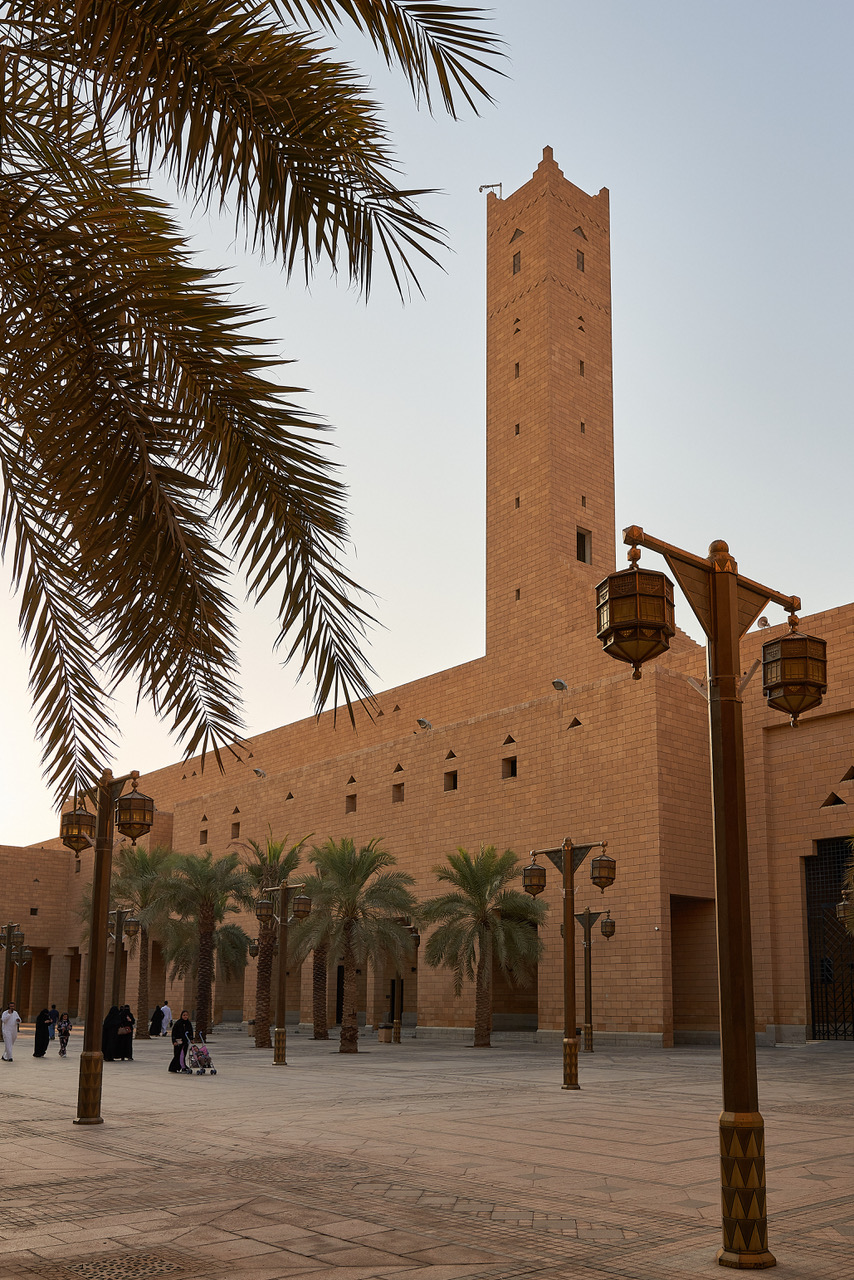
Al Faysaliyyah Mosque
It is adjacent to the King Faisal Centre for Research and Islamic Studies which is part of the King Faisal Foundation, and the Al Faysaliyyah Tower between King Fahd Road and Olaya Street. Both the mosque’s dome and the minaret abandon conventional patterns, i.e., instead of a traditional dome, a hollow cylindrical element cut off at the top is the defining architectural element that serves as a skylight for the interior of the mosque. The traditional minaret has also been reduced – in architectural terms – to a rudimentary tall columnar element with a square ground plan.
